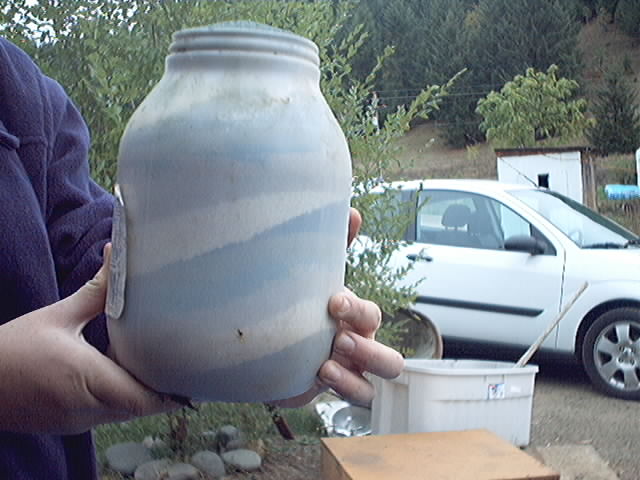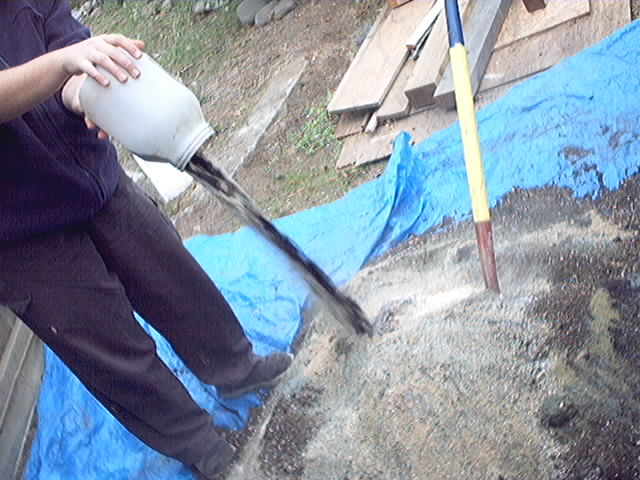| Home Page
About Page
Photo Page
Seeds and Clones
Contact Page
Favorite Links
Guest Book Page
Catalog Page
Catalog Page 2
Info for caregivers
SalivaDivinorum
Custom2 Page
|
|
|
THIS PAGE IS JUST SOME BASIC INFORMATION FOR PEOPLE JUST GETTING STARTED IN THE PROGRAM, We do not hold any personal resposiblity for anyone reading this site.
Being a caregiver is not as easy as buying a bag on the street. Not that scoring Illegal marijuana is easy and or safe. Crop failure for a varity of reason can happen at any time and even to the most experienced Grower.
|
 Growing good herb isnt easy.
Here is some advice anyone can use when growing and seeking some advice about soil and fertilizers and organic matter. Pictured above OGC Veggie Mix in use.
Growing good herb isnt easy.
Here is some advice anyone can use when growing and seeking some advice about soil and fertilizers and organic matter. Pictured above OGC Veggie Mix in use. |
|
Patient Caregiver Guidelines THIS IS GENERAL INFORMATION
The Oregon Medical Marijuana Act allows a qualified patient to designate any person to be their caregiver for the purposes of producing or using medical marijuana. This designated caregiver is then exempted from the Oregon marijuana laws just as the patient is. There are various issues that need to clear when using a caregiver and not growing on your own.
LAW
Both caregiver and patient should be familiar with OMMA provisions. The Oregon health division provides the full text of the law and related documents with their information packet for patients. Call the Oregon Health division at 503-731-8310 to request additional copies as needed.
If the garden is at the caregivers address, the caregiver can pisses up to three dried ounces and the patient can possess up to once ounce at their residence. Either the patient or caregiver can transport up to once ounce away from their residence. The garden can contain seven plants (3 mature). The garden must not be visible from a public place.
An affirmative defense or choice of all evils defense may also protect patients that exceed the limit of the laws. There are many cases where strict compliance with limits will cause patients to suffer because they are not using enough medicine. In such cases the patient should get a statement from their doctor stating that they require greater amounts.
All participants should be aware that federal law stills prohibits marijuana possession although it is unlikely that any OMMA cardholder would be prosecuted. OMMA does not allow the sell of marijuana under any circumstances.
COSTS
There are costs associated with producing medical marijuana. Indoor gardens require lights, timers, fans, and all sorts of other equipment, and paying an electric bill.
Outdoor gardens require soil, fertilizer, water and other expenses. Costs vary greatly depending the circumstances and size of garden. OMMA does not allow the sell of medicine under any circumstances, but a patient paying the costs associated with a gardening producing their medicine is not likely to be considered a sale. Patients and caregivers should agree on what if any contribution a patient will make toward an expense. A normal amount usually is no less than 50 a month. A 1000 watt light will cost about 65.00$ to run a month.
MEDICAL USES
The patient must ultimately be responsible for his or her own medical marijuana use. Caregivers can strive to provide a supply of high quality marijuana for patients to use. They cannot take responsibility for the medical effects. Patients must inform themselves about the risks and benefits of using medical marijuana.
SUPPLY SHORTFALLS
The grow-your-own system of OMMA allows is much less dependable then a system allowing patients to buy medicine at the pharmacy or buyers club. It will take a caregiver 4-6 months to grow the first crop. Outdoor gardeners will only produce one harvest each year. Indoor gardens can be the subject to crop failures for a variety of reasons. Spider mites, over fertilizing, under fertilizing, and light cycle problems can ruin a crop. The three-plant limit means there is no margin for error.
Patients and caregivers should expect some error. When they will have no medicine and should discuss some contingency plan. It can be helpful to be connected to a network of other patients and caregivers that might be able to help each other by providing a safety net. OMMA does allow any cardholder to give up to an ounce of marijuana to a card-holding patient. Some carriers may purchase black market marijuana although this purchase is not protected by OMMA.
TRANSPORTING
Patients and caregivers should agree on who will transport the marijuana to the patient’s residence. It is helpful both parties have the same expectation about how this will occur.
DISPUTES
Patients and caregivers should attempt work out any disagreements between themselves. Oregon Growers Collective can provide advice and information about the law but we are not trained mediators and have no legal standing to intervene. The relationship is between two individuals.
The most common reason for problems is when a caregiver is unable to supply adequate amount medical marijuana to the patient’s needs. Patient should try to estimate their needs and discuss them their caregiver. Both parties should be aware that patients often use more medicine once they have a study affordable supply. Planning for this may help avoid problems.
TERMINATING THE REALATIONSHIP
Either party can terminate the relationship at any time. However, termination put the caregiver in a problematic situation. Their garden ceases to be exempted from the laws prohibiting marijuana and is Illegal. Changes in relationship should be thoroughly considered.
Please help the Oregon Growers Collective Help more people like you out. Please contact us if you have any questions or would like to help.
|
|
What does the Oregon growers collective used for Fertilizers?
We recommend this mix for a soil additive and fertilizer for a vegetative season of a plant. For organic growing. Blood Meal (12-0-0) Bone meal (3-15-0) Feather Meal (12-0-0) Green Sand (0-0-3) Kelp Meal (1-0.01-2) Sea Bird Guano (12-8-2). This mix is a stage one planting mix. There are other mixes depending on when you are transplanting a plant.
This Custom blend for marijuana growing can be order from us on our catolog page.
we make fertilizer for any soil,climate, condition. LET US KNOW WE CAN HELP YOU OUT!
Catolog page
Plants are what they eat
Plants are what they eat. Too much or too little fertilizer can spoil a few months worth’s of growth in no time at all. Plants absorb carbon hydrogen and oxygen from air and water. They absorb other elements from the growing medium and nutrient solution. Supplemental nutrients supply in the form of fertilizer allows marijuana cultivated under high intensity discharge lights to reach maximum potential. Nutrients are grouped in to three category macro nutrients or primary nutrient secondary nutrients and micro nutrients or trace elements the states also known for being mobile and immobile nutrients.
Mobile nutrients re–translocate within the plant. They move to the specific area of the plant where they are needed. Generally Older leaves showed Deficiencies first. Immobile nutrients stay deposited in their original destination. New plant leaves show deficiencies first.
Nutrient deficiencies are less common when using fresh potting soil fortified with micronutrients. If soil or water supply is acidic, add Dolomite lime to buffer the pH and keep the soil sweet. Fresh soil planting mixes with a regular fertilization schedule averts many problems.
Common problems can be avoided when clean water and a proper nutrition solution and proper electrical conductivity and pH flush the system every two weeks with a fresh nutrient solution.
Some advice!
quick get a magnifying glass and look to see if there are any bugs under the leaf with the tiny white dots. IF you see them, You may also see webbing this is a dangerous parasite called SpiderMites,
they contaimate and destory gardens very hard to get rid of.
YOu need to mist the UNDERSIDES of the leaves of the infected plant.
you can used products from your local store to fight off the mites, commonly used are neem oil, or pyrithrin, or safer soap.
try to stay organic if your planning on smoking these plants when you used some pesticides if its only one one small plant islolate that plant, some people used predator insects or pyrithrin emitors
the little spots you see is the damage they have already done to the plant. they will destory your weed and make it unsmokable they spread and can destory a garden in days if not attented in heat.
Keep the temptures down cooler the better
take off worse leaves and seal them away in a plastic bag and thorow them away from your garden
mites are bad news, misting with a hard mist On the UNDERSIDES of the leaves 2-3 times a day will help stop there breeding.
be aware using so much water with heat can bring on gray mold(botritries) you can kill that with common house hold hydrogen proxide
Sign our guestbook
|
 Organic Matter, What is it?
Feeding the Soil first is the foundation of organic gardening and farming. Strengthen the soil and plants will thrive because like the plants the soil is a living organism. Healthy soil contains millions of beneficial microscopic organisms of various kinds. They perform a vital function and bring real difference the eye can see. Ideal soil is 25% air 25% water along with 45% clay, silt, sand,(potting soil, compost) and 5% organic matter. Plants require air, water, and a porous medium for root expansion and food. Food should be provided by an organic fertilizer and mineral amendments.
Organic Matter, What is it?
Feeding the Soil first is the foundation of organic gardening and farming. Strengthen the soil and plants will thrive because like the plants the soil is a living organism. Healthy soil contains millions of beneficial microscopic organisms of various kinds. They perform a vital function and bring real difference the eye can see. Ideal soil is 25% air 25% water along with 45% clay, silt, sand,(potting soil, compost) and 5% organic matter. Plants require air, water, and a porous medium for root expansion and food. Food should be provided by an organic fertilizer and mineral amendments.
All supplemented soil eventually decays. This decay cycle is when naturally the supplements are converted into useful plant nutrients.
Organic Fertilizer, Organic Matter
Well what is Organic Matter? It’s a plant fuel, moisture retainer in tiny reservoirs, increases drainage, improves airflow, benefits soil life and attracts earthworms. There are four primary resources for organic matter, decaying plants and roots (after being composted), mulch, cover crops, and compost. Organic matter is a soil amendment and is not fertilizer source. Works best when being mixed with soil and fertilizer.
Organic fertilizers are derived from any mass, plants, and mineral resources to work with organic matter to feed the soil and stimulate the plant growth.
|
Organic Fertilizers
Organic fertilizers are usually sold in 3 styles. Dry powder; water soluble powders, and liquids. Single Units fertilizers are used for specific need. There are 4 primary nutritional source for a plant, nitrogen, phosphorous, and potassium. These elements are listed usually on packages as N –P- K. Nitrogen (N) energizes, vegetative growth. Phosphorous (P) produces expansive roots, flowers, fruits, and viable seeds. Potassium (K) promotes resistance to stress and disease. Potassium also improves performance of both nitrogen and micronutrients.
|
|
|


